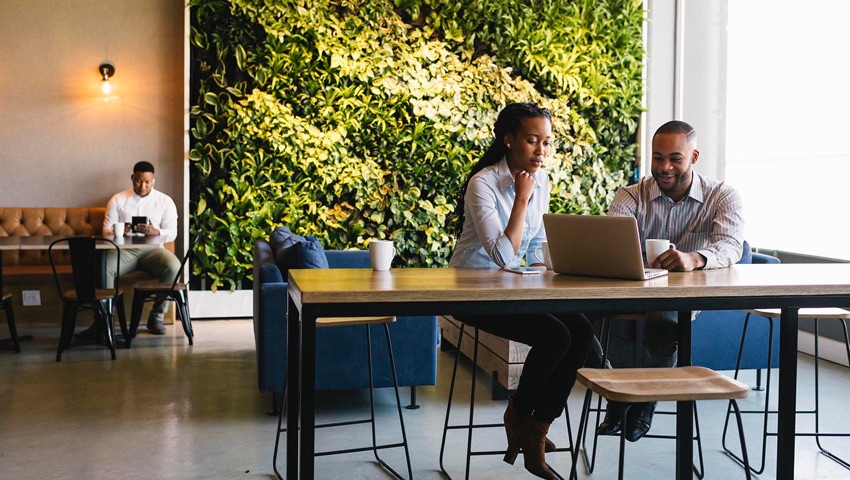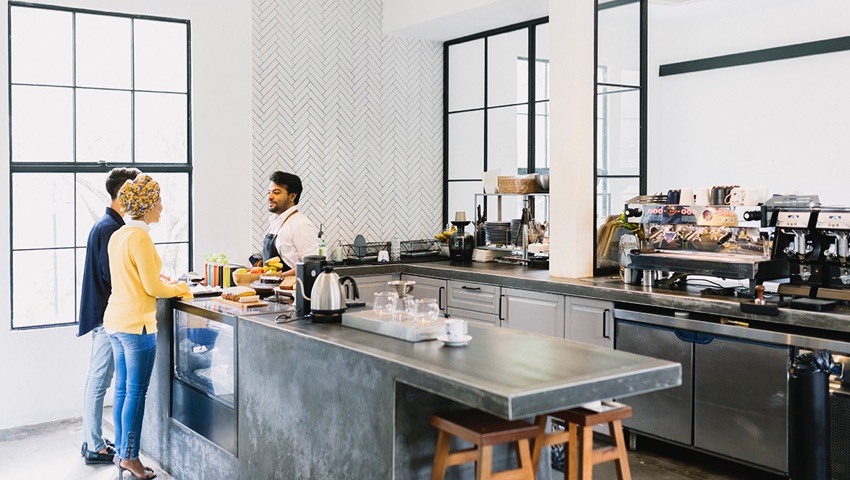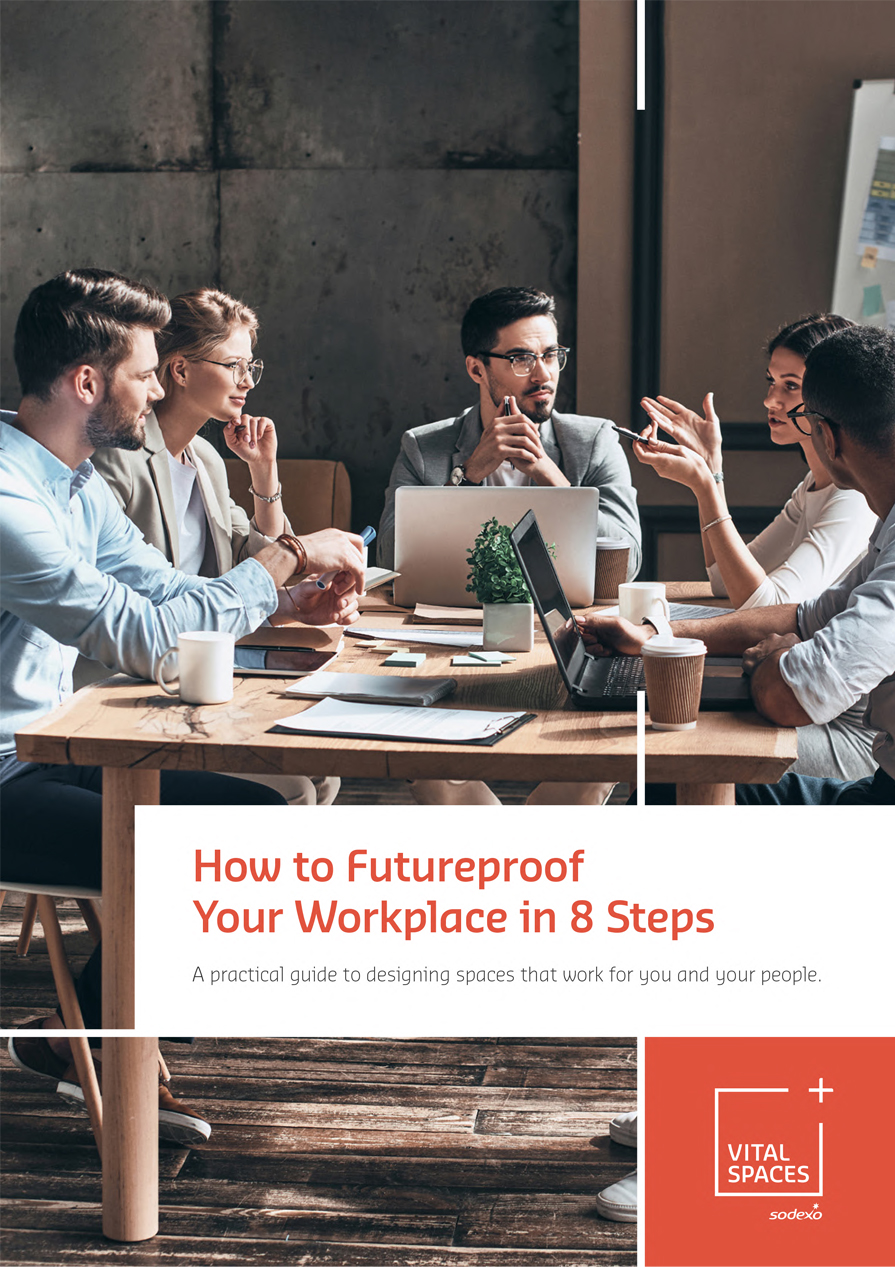With 27% of employees saying that access to healthy food and drink is the number-one way their workplace could support them, leading companies are investing in their workplace restaurants to improve workers' wellbeing. But how can you adapt dining spaces to succeed in the hybrid working era?
Food brings people together. As one of the few places employees see each other in person, eating areas now function as the beating heart of any office building.
Canteens have become essential for social interaction and employee bonding. But with only half of employees now working onsite at any one time, companies are rethinking the amount of space required and how to leverage it.
As a result, modern organisations are making their environments more engaging than ever before to entice staff back into the office, while keeping up with technology that facilitates new food and working models.
The reality is that no one wants to get left behind as the future of food in the workplace changes forever.
So, what aspects of canteen design are indispensable for a fantastic employee experience?
How can you build an inviting and efficient dining space?

With 59% of working adults enthusiastic or relieved about returning to workplaces (according to our research in collaboration with Harris Tracker), a new era of work demands employers look at the benefits of revitalising their dining spaces.
The mass adoption of hybrid working models has meant that pre-pandemic working arrangements no longer function well. Old workplace design is not optimised for employee engagement or efficient use of space.
But why does canteen interior design and layout matter?
Optimised workplace design affects employee mood for the better, producing creative working environments that boost productivity. For that reason, dining areas must be inviting, comfortable, and make the most available space.
What are our top tips for revitalising your dining areas?
- Define your goals for the space. Do you want an utterly flexible workplace restaurant that can operate as a collaborative working area and adapt to inconsistent footfall, or is your number one priority enticing employees back into the office with delicious food choices?
- Understand how design can help you achieve these. Technology-led models can be a powerful tool for optimising your workplace canteens, whether with sensors that track occupancy or eliminating the need for kitchens altogether with food delivery services such as Fooditude.
- Measure your success by engaging with employees. Inviting and informal spaces such as dining areas are critical for stimulating collaboration. Listen to employee feedback to improve your employee experience.
TSK is a Sodexo Vital Spaces partner brand whose team of specialists design workplaces that foster meaningful employee connections and optimise business performance. TSK's strategic and creative approach uses human insight and understanding to create workplaces that prioritise the employee experience.
Helping organisations design the workplace restaurants of the future
With our client Sky Betting and Gaming, TSK's space utilisation study found that the company was only using around 44% of its workstations, with only 33% average occupancy of the entire office at any one time. TSK's design process took this into account, and over 20% of the office is now dedicated to non-working areas such as dining spaces - for socialising, relaxation and recreation.
When redesigning another of our client's workplace restaurants, we created areas that encouraged teams to connect with contemporary interiors. Our agile design accommodated flexible occupancy levels that satisfied the client's hybrid aspirations.
The original plan involved renovating the ground floor of the building, but we instead proposed relocating the main dining area there. By working with their architect and team, we developed plans that meant an entire upper floor could be repurposed and food would be front and centre in their office.
The stunning new layout was open and welcoming while easily enabling space conversions for total and part-day usage. Varied seating arrangements suit long and short-term stays, with colours and lighting crucial for creating an interactive experience.
Our new layout helped the client save 219 sq m of under-utilised space, and unique environments promoted employee connection and wellbeing.
Forge a safe and accessible workplace
Make everyone feel welcome with workplace design that looks again at current health and safety practices to consider employees' needs.
According to our Harris Tracker report, more than half of the workforce are concerned about personal health and safety. Although utilising space often means downsizing, no one wants a congested and overcrowded canteen. So don't compromise on mobility, accessibility, or social distancing.
Thoughtful planning means everyone can be catered for and made comfortable in their workplace, while innovative canteen design will never affect social interaction or kitchen area usage.
Facilitate flexible working with flexible eating
Elastic offices are key to employee engagement, so dining spaces need to be adaptable to cater for quick catchups, snack breaks, and hour-long lunches. Make workplaces accessible all day long by utilising frictionless smart vending and portioning the day more frequently into breakfast, brunch, lunch, and afternoon tea.
Contemporary offices need to encourage flexible use of all available space, offering a wide variety of meals and snacks that promote wellbeing and a healthy lifestyle. However, unpredictable office footfall means organisations must think strategically about which food services are the best fit.
So companies now find themselves thinking: are we spending efficiently on sought-after employee benefits?
It all comes down to the company's strategy.
If it includes making the most out of the office space by removing the kitchen area, then an agile brand like Sodexo's Fooditude may be the answer. The central production kitchen uses fresh ingredients to cook, deliver, and clear up prepared food, enabling working areas to return to different usages. By operating outside of office spaces, the service entirely does away with the need for office kitchens in the first place, saving on both space and cost.
On another hand, if the focus is employee retention and happiness by providing bespoke and premium fine-dining offering, then Good Eating Company is the way to go, while offers like Sodexo's Modern Recipe provide a contemporary menu to inspire employees.

A great example of this includes Modern Recipe's rollout at global pharmaceutical company AstraZeneca and UK multinational drinks company Diageo. Since being introduced at AstraZeneca's Cambridge site, workplace dining increased by 45 per cent, and revenue went up 60 per cent. At Diageo, sales turnover rose by 15 per cent.
Isn't it amazing what great food can do?
It is time to refresh your workplace dining strategy
Future-proof your offices by redesigning staff canteens and creating areas for employees to unwind and catch up.
Offices impact workers' mood and mental health, and excellent design leads to greater engagement and staff retention. So, help make employees feel at home and generate a productive and creative atmosphere with stunning workplace design.
How will you revitalise your dining areas?
If you’re ready to take that step, download our new guide which offers practical insight on how to design the right space to bring the best out of your workforce.
Vital Spaces
Are you being brave enough to change?

